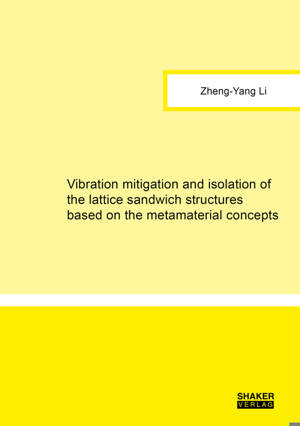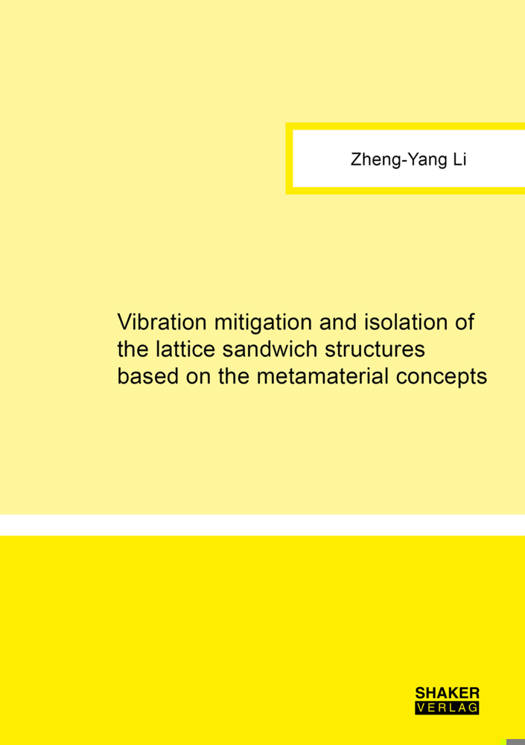
- Retrait gratuit dans votre magasin Club
- 7.000.000 titres dans notre catalogue
- Payer en toute sécurité
- Toujours un magasin près de chez vous
- Retrait gratuit dans votre magasin Club
- 7.000.000 titres dans notre catalogue
- Payer en toute sécurité
- Toujours un magasin près de chez vous
Vibration mitigation and isolation of the lattice sandwich structures based on the metamaterial concepts
Zheng-Yang Li
49,45 €
+ 98 points
Description
Lightweight lattice sandwich structures are widely used in different engineering applications because of their high stiffness-to-density ratio and high energy-absorption capability. However, their vibration or dynamic performance is a critical issue, which may limit their wide-range applications. This thesis aims to develop efficient methods for improving the vibration mitigation and isolation property of the LSSs while maintaining their other distinct advantages. To reach this target, adequate theoretical and numerical models based on the metamaterial concepts are adopted and applied vibration mitigation and isolation property of the lattice sandwich structures. In particular, several passive and active methods, as well as their two hybrid forms are developed for controlling or manipulating the vibration or flexural wave propagation characteristics of the lattice sandwich structures.As passive methods, chessboard-design, gradient design and local resonance mechanism are proposed. The chessboard-design and gradient design techniques break the spatial symmetry of the lattice sandwich structures, which is beneficial to achieve wide band-gaps, vibration or flexural wave trapping and unidirectional flexural wave propagation.The proposed active methods are based on the utilization of the piezoelectric or electromechanical coupling effect. Shunted piezoelectric Lead Zirconate Titanate (PZT) patches are attached to an elastic base or host structure, which act as sensors and actuators. Then, the active feedback control scheme is incorporated to tune the vibration mitigation and isolation properties of the lattice sandwich structures. To enhance the tuning effects of the active feedback control scheme, two adaptive active feedback control strategies are developed. In the first adaptive control strategy, simple frequency-dependent control gains are estimated and implemented, which can broaden the band gaps of the pyramid-core lattice sandwich structures. The second adaptive control strategy is realized by combing an optimization algorithm (such as the particle swarm optimization or the differential evolution optimization algorithm) to automatically select the best control gains and the active feedback control. Numerical examples demonstrate that the second adaptive control strategy has several essential advantages, for instance, band gap widening, attenuation enhancement, elimination of the resonance peaks inside and outside of the band gaps, merging of different band gaps, and self-adaptivity to external stimulations without human intervention.At last, two hybrid methods combining the passive and active methods are proposed. The present comprehensive results show that the passive and active methods as well as their hybrid forms proposed in this thesis can efficiently and feasibly enhance the vibration mitigation and isolation performance of the lattice sandwich structures, while keeping their high stiffness-to-density ratio and other essential advantages.
Spécifications
Parties prenantes
- Auteur(s) :
- Editeur:
Contenu
- Nombre de pages :
- 201
- Langue:
- Anglais
- Collection :
Caractéristiques
- EAN:
- 9783844086737
- Format:
- Livre broché
- Dimensions :
- 166 mm x 12 mm
- Poids :
- 302 g







